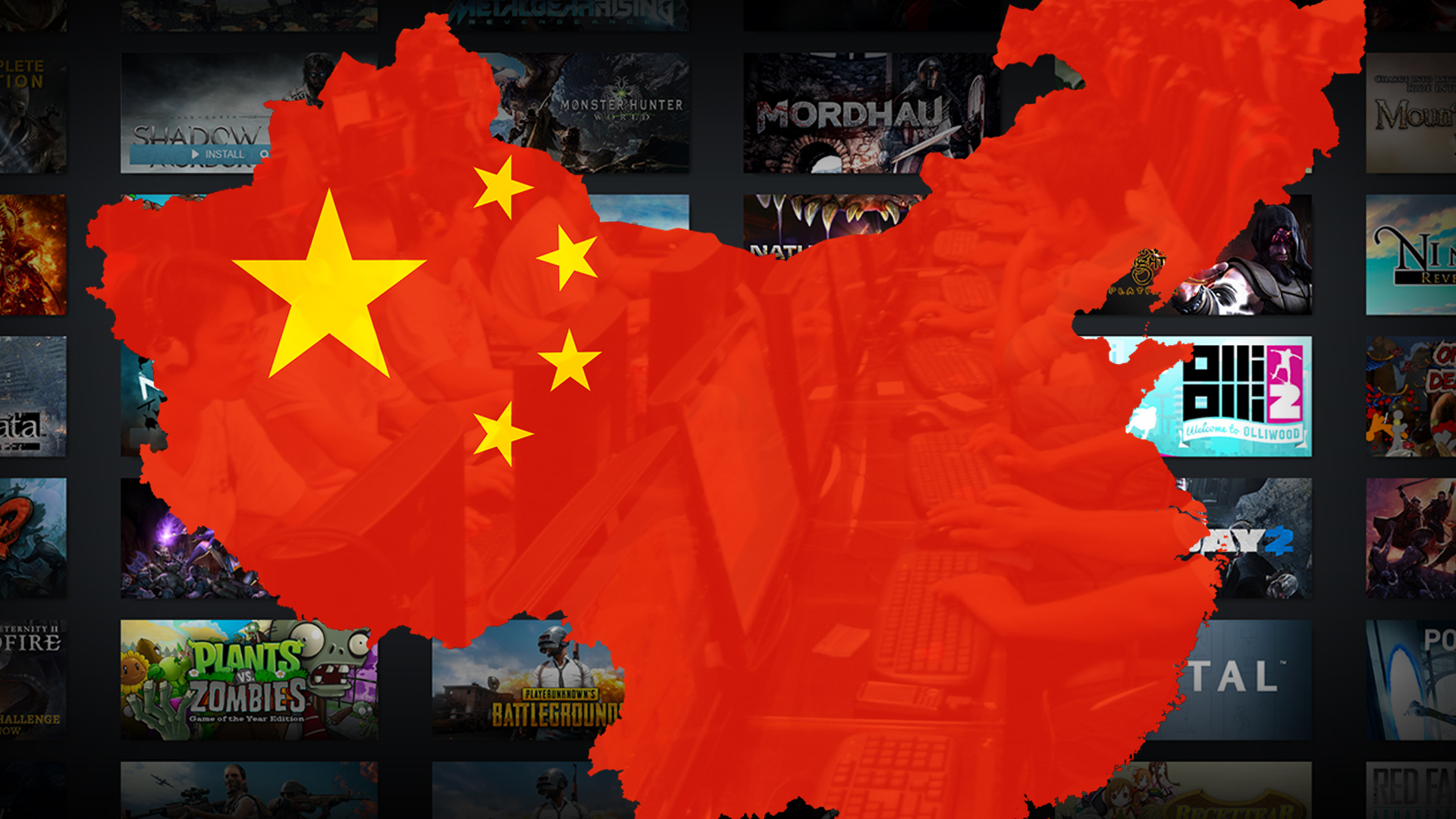Chinese is now Steam's most popular language, according to its hardware survey
User data indicates over 37 percent of users have their language set to Simplified Chinese.

Simplified Chinese has become the largest language demographic on Steam, according to the results of Valve's December 2019 Steam Hardware and Software survey. Each month, this optional survey collects basic system configuration data on a portion of Steam's 90 million monthly active users ranging from what CPU they're using to how much free space players have on their hard drive. This survey also collects data on what language users have their Steam client set to, and, until now, English was the dominant choice, typically representing around 30 to 40 percent of users.
That has changed as Simplified Chinese language users rocketed up to the number one spot in December 2019. Simplified Chinese is now the language of choice for 37.8 percent of Steam users who participated in the survey, climbing a significant 14.4 percent in the last month's survey. As a result, English users shrank to 30.4 percent.
I've reached out to Valve to clarify these results, but it appears this might be the first time that Simplified Chinese has eclipsed English as the dominant language on Steam—assuming the survey is accurate, that is.
The Steam Hardware survey isn't scientific, and hasn't always been a trustworthy source. Back in April of 2018, for example, Valve fixed a problem in the way the survey collected data that had been throwing off results for almost an entire year. Normally, the survey collects data from its users once a year but Valve discovered a flaw in its methodology thanks to the way Asian internet cafes manage their PCs. To make a long story short, Asian internet cafe PCs were able to fill out the survey multiple times, creating duplicate entries and skewing the results.
Understandably, this created some big problems. Because Steam's hardware survey is the largest of its kind for PC gamers and tracks information like how many Steam users are using Intel or AMD CPUs, its results are often conflated with overall market share. But AMD's Scott Herkelman contests that the Steam hardware survey isn't indicative of actual market share because of flaws in Valve's methodology.

China's games industry is the largest in the world, but it's also complicated and hard to understand. That's exactly why you should read our in-depth report on how government censorship and Steam have shaped the explosive rise of PC gaming in China.
Speculating, it's possible that a similar flaws could be responsible for this sudden spike in Simplified Chinese users on Steam in December 2019. Hardware survey results from previous months can only be found using the Wayback Machine, but I spent some time digging over the past few years to track the growth of Chinese users. In 2018, Simplified Chinese language users typically were the second-largest demographic, accounting for 20 to 30 percent of survey respondents. The only time Simplified Chinese became the top language in the Steam hardware survey was from July 2017 to April 2018—exactly the same period that Valve says the Steam hardware results were bugged and collecting duplicate reports from PCs in Asian internet cafes, which accounts for the sudden spike.
If December 2019's results are accurate, however, it does correlate with other data that suggest a large increase of Chinese users on Steam. Industry analyst Daniel Ahmad reported in 2018 that Steam's Chinese users had swelled to over 30 million.
The biggest gaming news, reviews and hardware deals
Keep up to date with the most important stories and the best deals, as picked by the PC Gamer team.
That's partially due to increasingly strict government regulations and censorship that culminated in a complete freeze on the application process for publishing licenses, which games need to acquire before they can be sold in China. Steam, however, is a mysterious and invaluable loophole in China's censorship firewall. Over the past four years, Chinese gamers have flocked to Steam to play uncensored and unregulated games, the most popular being PlayerUnknown's Battlegrounds, which became an enormous phenomenon in China when it first launched back in 2017. In June of 2018, PUBG had reportedly sold over 50 million copies worldwide, and Steam Spy estimates that around 50 percent of biweekly players are Chinese (note: this information is only available to Steam Spy's Patreon supporters).
This also coincides with an increasing number of Chinese-only games climbing Steam's top sellers list. Last year, life sim Chinese Parents and strategy RPG Scroll of Taiwu both became enormous successes, each selling over a million copies despite not being available in English. More recently, open world RPG Sands of Salzaar became a breakout hit, selling over 50,000 copies in less than a week.
We've reached out to Valve hoping to get some clarity on these results. We'll update this story when we hear back.
With over 7 years of experience with in-depth feature reporting, Steven's mission is to chronicle the fascinating ways that games intersect our lives. Whether it's colossal in-game wars in an MMO, or long-haul truckers who turn to games to protect them from the loneliness of the open road, Steven tries to unearth PC gaming's greatest untold stories. His love of PC gaming started extremely early. Without money to spend, he spent an entire day watching the progress bar on a 25mb download of the Heroes of Might and Magic 2 demo that he then played for at least a hundred hours. It was a good demo.


